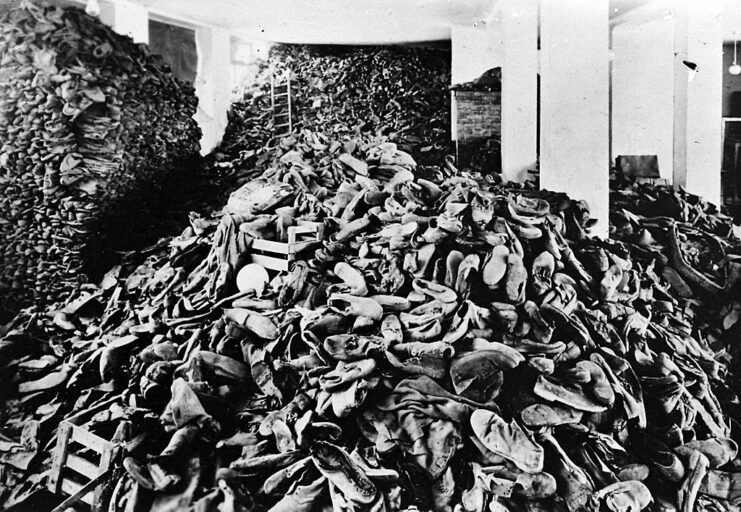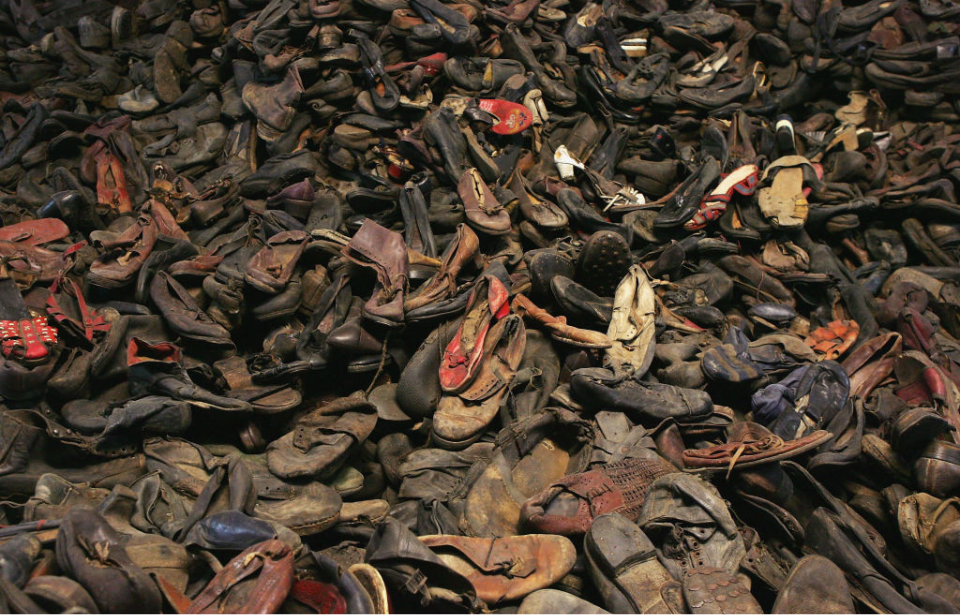The Holocaust stands as one of the darkest chapters in human history, with six million Jews perishing during the Second World War. Beyond this staggering loss of life, it also bore witness to the systematic looting and confiscation of personal belongings – including shoes – from the Jewish victims who were transported to concentration camps, including Auschwitz. These seemingly mundane items now serve as powerful reminders of the immense suffering endured during that dark period.
When Jewish prisoners first traveled to concentration camps, they were told they were being resettled elsewhere. Allowed to bring with them 100 pounds of luggage with them, the majority packed their most precious and valuable items. However, upon arriving at the camps, these personal belongings were taken from them.
At Auschwitz, these personal possessions were kept in the Kanada warehouses – given the name as they were viewed as a land of plenty. From there, they were used by guards or sent elsewhere within Germany.
Jewish inmates were deprived of belongings with sentimental value, such as clothing, jewelry and family heirlooms; these carried with them a deep emotional significance, and they served as tangible connections to their past, culture and heritage. The twisted rationale behind taking these items was to reduce the Jews to mere numbers, a deliberate attempt to erase their individuality and humanity.

Despite the overwhelming dehumanization, some prisoners found ways to resist and hold onto their belongings as tokens of hope and survival. Even decades later, jewelry has been found hidden away by prisoners who didn’t want the guards to get their hands on their important family items.
However, it wasn’t these valuable items that held the most importance, but, rather, something more mundane.
Shoes became one of the most important items for those imprisoned at concentration camps, as some of the only items t0 reflect their earlier lives. One survivor remarked, “Good shoes were a desirable commodity. Those who had bad shoes would wait for the opportunity to take a better pair from their comrades. Those whose shoes were stolen had to make do with whatever pair was left in the block.”
Most of these replacements came from those who were dying or had already been killed. When the guards took prisoners to the gas chambers, their shoes were added to the already vast pile from past victims.
More from us: Soviet Citizens of All Ages Helped the Red Army Defend Against the Siege of Leningrad – Including Children
As the Allies liberated the concentration camps, they encountered these grim reminders. The Featured Image of this article shows a pile of shoes removed from Jewish men, women and children following their deaths. This particular display was made public at the Auschwitz-Birkenau State Museum in Oświęcim, Poland in advance of the 60th anniversary of the camp’s liberation.
